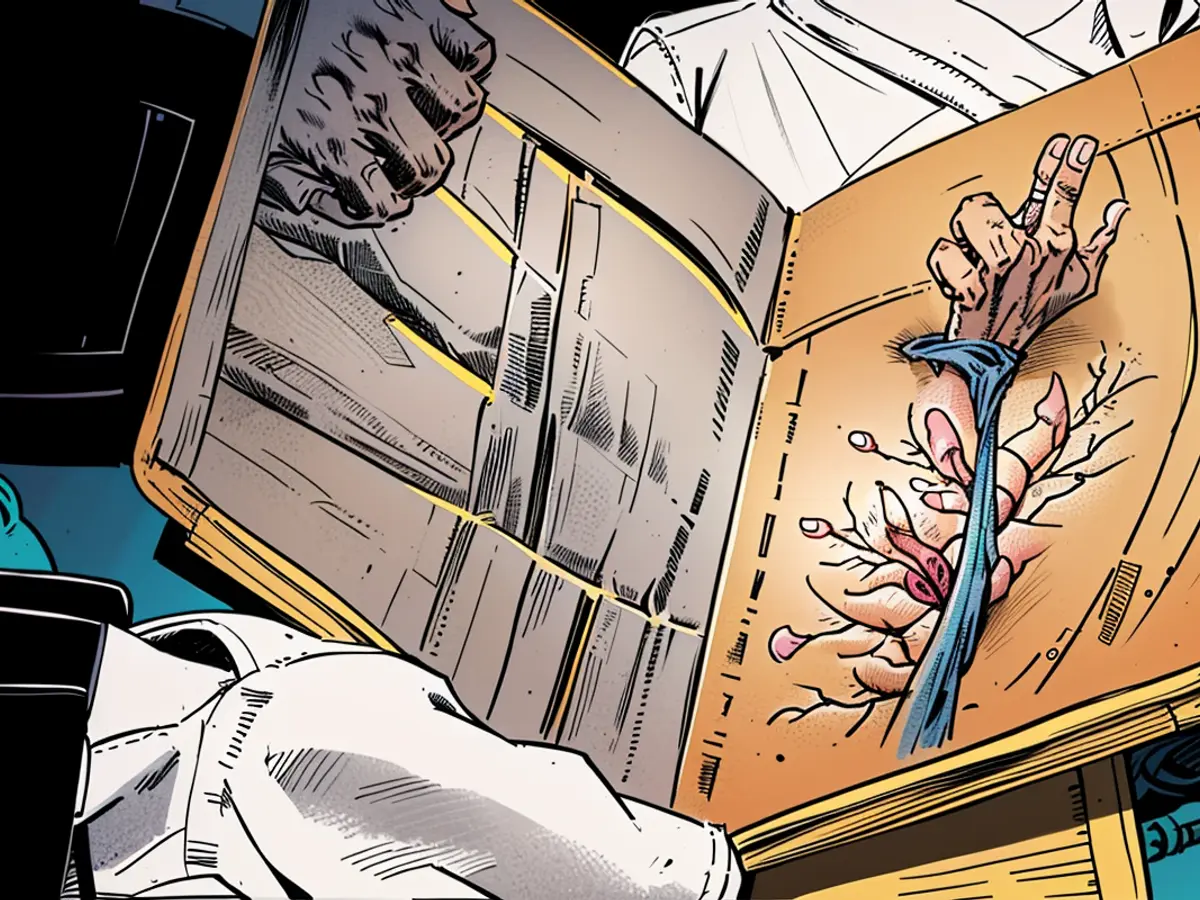Auction failed - Collections acquire sketchbook by Caspar David Friedrich
After disputes over a million-euro auction, a rare sketchbook by Romantic painter Caspar David Friedrich (1774-1840) is now entering public collections. The Klassik Stiftung Weimar, the Staatlichen Kunstsammlungen Dresden, and the Stiftung Preußischer Kulturbesitz, with the support of the Kulturstiftung der Länder, the Ernst von Siemens Kunststiftung, and other donors, have acquired one of the six surviving sketchbooks of Friedrich's. The notebook will be presented in Berlin on a Friday.
The "Karlsruhe Sketchbook" was sold at the Berlin auction house Grisebach for a total of approximately 1.8 million Euros in the past year. The estimated value of the "Karlsruhe Sketchbook" was previously up to 1.5 million Euros. The auction price was 1.45 million Euro, and the gross price for the auction house was then 1.819 million Euro.
Export Ban as Cultural Heritage
Just before the auction, it was announced that the sketchbook should be protected as cultural heritage. The Berlin cultural administration initiated a procedure to have the "Karlsruhe Sketchbook" entered into the list of nationally valuable cultural assets. This meant an export ban for the unnamed buyer.
The notebook had belonged to a family in Karlsruhe for over 200 years. According to reports, it is the last known, privately owned bound copy of one of the artist's sketchbooks. Of the approximately 20 of these notebooks that are known to have existed, only six have survived. Four of them - some incomplete - are preserved at the National Museum in Oslo, and one is at the Kupferstichkabinett in Dresden.
Sketchbook in the Traveling Cloak
The sketchbook was carried in the pockets of Friedrich's traveling cloak numerous times between mid-April and early June 1804. The drawings were created in Dresden. Among other things, fine pencil drawings of trees, branches, and tree trunks can be seen. Several motifs that the artist incorporated into his major works, such as the sketch of an oak tree, were taken from this sketchbook and used in his early work "Hunnengrab im Schnee".
- The acquisition of the rare Caspar David Friedrich sketchbook is a significant addition to the public collections in Germany, specifically those of the Klassik Stiftung Weimar, the Staatlichen Kunstsammlungen Dresden, and the Stiftung Preußischer Kulturbesitz.
- The "Karlsruhe Sketchbook" is considered one of the six surviving sketchbooks of Romantic painter Caspar David Friedrich, making it a valuable cultural asset in Baden-Württemberg and beyond.
- The Prussian Cultural Heritage Foundation, along with other cultural institutions and donors in Germany, played a crucial role in securing the acquisition of the sketchbook, ensuring it remains in the country and is accessible to the public.
- The value of the "Karlsruhe Sketchbook" was estimated at up to 1.5 million Euros before an unexpected high bidding price during the auction at Grisebach in Berlin.
- As a result of the disputes over the sketchbook, the Berlin cultural administration initiated a procedure to have it protected as cultural heritage, effectively placing an export ban on it as a nationally valuable cultural asset.
- The Karlsruhe family, who had owned the sketchbook for over 200 years, was the unnamed buyer at the auction, but their plans to export the sketchbook were thwarted due to the export ban.
- In Dresden, the Kupferstichkabinett museum is already home to one of the surviving sketchbooks from Caspar David Friedrich, displaying the artist's work for visitors and preserving it for future generations.
- The Meissen Porcelain Manufactory and the Frauenklostermuseum Thüringen, both located in Saxony, have also benefited from the cultural asset protection policies implemented in Germany, ensuring the permanence of priceless pieces in the country.
- The culture and cultural policy of Germany, as demonstrated by the disputes over this precious sketchbook, prioritize the protection and acquisition of cultural assets, preserving the legacy of painters like Caspar David Friedrich and maintaining a rich cultural landscape for the nation.








